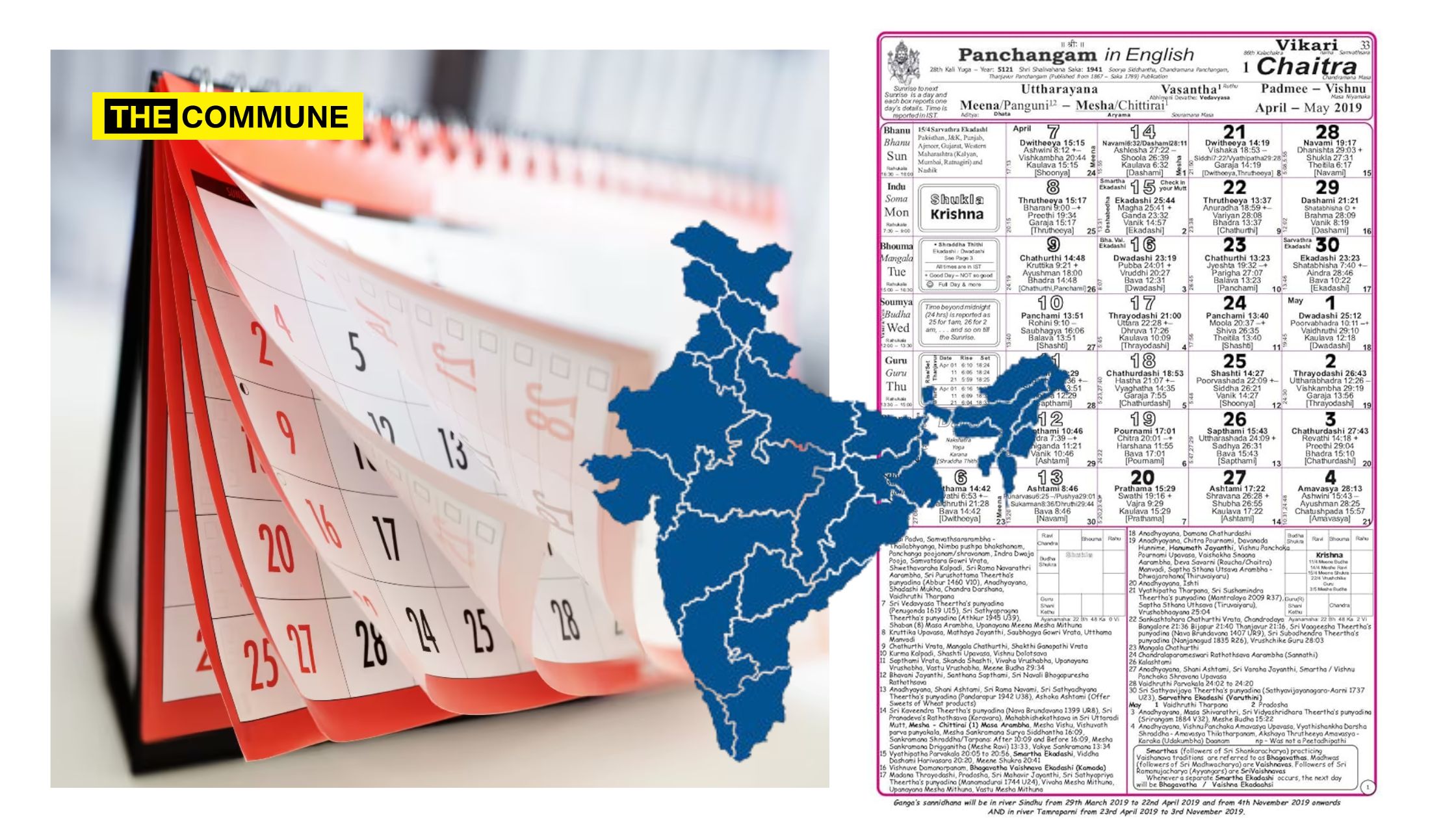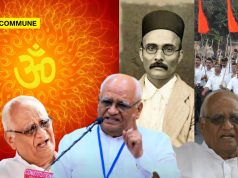
The Gregorian calendar, a global standard for civil purposes, has a fascinating history that intertwines with the narratives of many nations, including India. While the calendar’s origins lie in Europe, its adoption and adaptation in India present a unique story shaped by colonialism, modernization, and cultural integration. This article delves into the journey of the Gregorian calendar from its inception to its present-day use in India, highlighting the socio-political and cultural dynamics that influenced its acceptance.
Historical Context: Pre-Gregorian Calendars In India
Before the Gregorian calendar’s introduction, India had a rich tapestry of indigenous timekeeping systems. These calendars were deeply rooted in astronomical observations and cultural practices, reflecting the diversity of the Indian subcontinent. Some of the prominent pre-Gregorian calendars included:
- The Hindu Calendar: The Hindu calendar, also known as the Panchang, is a lunisolar calendar that plays a crucial role in Hindu religious and cultural life. It is used to determine the dates of festivals, auspicious times (muhurtas), and rituals. The calendar varies regionally, with different states and communities following slightly different versions.
- The Islamic Calendar: The Islamic or Hijri calendar is a purely lunar calendar used by the Muslim community in India. It marks the months based on the moon’s cycles and is essential for determining the dates of Islamic festivals like Eid-ul-Fitr and Eid-ul-Adha.
- The Vikram Samvat and Shaka Samvat: These are two prominent Indian calendars used historically. The Vikram Samvat, established by King Vikramaditya, is widely used in North and Western India. The Shaka Samvat, introduced by the Shaka rulers, is the official civil calendar in India.
The Introduction Of The Gregorian Calendar In India
The advent of the Gregorian calendar in India is closely linked to British colonial rule. When the British East India Company established its foothold in India in the 17th century, they brought with them its administrative systems, including the Julian calendar. However, it was the Gregorian calendar that gradually replaced the Julian calendar during the British Raj.
Early Encounters: The Portuguese Influence
Before British colonization, the Portuguese were the first Europeans to introduce the Gregorian calendar to parts of India. Goa, a Portuguese colony from the early 16th century, saw the introduction of the Gregorian calendar in 1582, shortly after its adoption in Europe. The Portuguese influence, however, was limited to their territories and did not significantly impact the broader Indian timekeeping practices.
The British East India Company And The Julian Calendar
The British East India Company initially used the Julian calendar for its administrative and commercial activities. As British influence expanded, the need for a standardized calendar system became apparent. The inconsistencies between the Julian and Gregorian calendars were becoming problematic, particularly for international trade and communication.
The Transition To Gregorian Calendar
The transition from the Julian to the Gregorian calendar in British-administered India was not immediate. It was a gradual process that culminated in 1752 when Great Britain officially adopted the Gregorian calendar. The reform involved skipping 11 days (September 2, 1752, was followed by September 14, 1752) to realign the calendar with the solar year. This change was implemented in British colonies, including India.
How The Gregorian Calendar Affected Indian Society
The introduction of the Gregorian calendar had far-reaching implications for Indian society, particularly in areas such as administration, education, and social practices. Here are some key impacts:
- Administrative Uniformity: The adoption of the Gregorian calendar brought administrative uniformity to British India. It standardized official documentation, legal proceedings, and government functions. This uniformity was crucial for efficient governance, especially in a vast, diverse territory like India.
- Educational Reforms: The British colonial administration placed a strong emphasis on education, leading to the establishment of schools and universities across India. The Gregorian calendar became the standard for academic calendars, influencing the scheduling of examinations, academic sessions, and holidays. This alignment with Western education systems facilitated the integration of Indian students into global academia.
- Economic and Commercial Integration: The Gregorian calendar played a vital role in integrating the Indian economy with global trade networks. It provided a common reference point for business transactions, shipping schedules, and contracts, making it easier for Indian merchants to engage in international trade. This integration was instrumental in the economic development of colonial India.
- Social and Cultural Adaptation: The influence of the Gregorian calendar extended beyond administration and commerce. It began to permeate social and cultural practices in urban areas, especially among the Western-educated Indian elite. Christian communities in India, such as the Anglo-Indians and Goan Catholics, also adopted the Gregorian calendar for their religious and social events.
Resistance And Cultural Resilience
Despite its widespread adoption, the Gregorian calendar faced resistance in many parts of India. The persistence of indigenous calendars and cultural practices highlighted the resilience of Indian traditions. This resistance can be understood through various lenses:
- Religious Significance: The Hindu and Islamic calendars held deep religious significance for their respective communities. Festivals, rituals, and religious observances were intricately tied to these traditional calendars. For many Indians, adopting the Gregorian calendar did not mean abandoning their religious timekeeping systems. Instead, they continued to use both calendars in parallel, each serving different purposes.
- Regional Diversity: India’s regional diversity played a significant role in the continued use of indigenous calendars. Different states and communities had their unique calendars, which were closely linked to local festivals and agricultural cycles. The Gregorian calendar, while useful for official purposes, did not replace these regional systems in everyday life.
- Colonial Resistance: The introduction of the Gregorian calendar was seen by some as another aspect of colonial imposition. Nationalist movements in the late 19th and early 20th centuries emphasized the importance of preserving Indian culture and traditions. This sentiment fueled resistance to the complete adoption of Western practices, including the calendar.
Post-Independence India And The Gregorian Calendar
After gaining independence in 1947, India retained the Gregorian calendar for official purposes. However, the Indian government also recognized the importance of indigenous calendars and sought to integrate them into the national framework.
- Adoption Of Shaka Samvat: In 1957, the Indian government adopted the Shaka Samvat as the official calendar alongside the Gregorian calendar. The Shaka Samvat, with its historical and cultural significance, became the basis for Indian national holidays and official documents. This move was a testament to India’s commitment to preserving its cultural heritage while embracing modernity.
- Dual Calendar System: Today, India operates a dual calendar system. The Gregorian calendar is used for most civil, administrative, and educational purposes, while the Shaka Samvat and other traditional calendars continue to be used for religious, cultural, and regional events. This coexistence reflects the pluralistic nature of Indian society, where multiple traditions are respected and celebrated.
- Cultural Festivals And Calendars: Indian festivals, which are an integral part of the country’s cultural fabric, are determined using traditional calendars. For example, Diwali, Holi, Eid, and Christmas are celebrated based on the Hindu, Islamic, and Gregorian calendars, respectively. The ability to navigate multiple calendars is a unique aspect of Indian life, showcasing the nation’s cultural diversity.
Challenges And Opportunities
The coexistence of the Gregorian and traditional calendars in India presents challenges and opportunities. Some of these include:
- One of the challenges is synchronizing events and holidays across different calendars. The government and organizations must coordinate public holidays, official events, and school schedules to accommodate religious and cultural observances. This requires careful planning and consideration of diverse community needs.
- There is an opportunity to educate the younger generation about the significance of different calendars and their historical contexts. Schools and universities can incorporate lessons on the Gregorian and traditional calendars into their curricula, fostering an appreciation for India’s rich cultural heritage.
- Advancements in technology offer new possibilities for integrating and managing multiple calendars. Digital tools and applications can help individuals and organizations keep track of important dates from various calendars, ensuring that no significant event is overlooked.
- The continued use of traditional calendars is a testament to India’s cultural resilience. There is an opportunity to document and preserve these calendars for future generations. Scholars and cultural organizations can collaborate to create comprehensive records of traditional timekeeping practices, ensuring that they are not lost to history.
The journey of the Gregorian calendar in India is a fascinating tale of adaptation, resistance, and coexistence. The story reflects the complex interplay between global influences and local traditions, from its introduction during the colonial period to its present-day use alongside traditional calendars.
India’s ability to embrace the Gregorian calendar for administrative and civil purposes while preserving its indigenous calendars for religious and cultural events is a testament to its pluralistic ethos. It highlights the resilience of Indian culture and its capacity to integrate diverse influences while retaining its unique identity.
As we move forward, the dual calendar system in India will continue to evolve and will be shaped by technological advancements, cultural shifts, and global interactions. Understanding and appreciating this intricate tapestry of timekeeping gives us a deeper insight into India’s rich and dynamic heritage. Through this exploration, we celebrate not just a calendar but the spirit of India—a land where tradition and modernity coexist harmoniously and where the rhythms of the sun and the moon marks the passage of time.
Ganesh Kumar is a geo-political analyst.
Subscribe to our channels on Telegram, WhatsApp, and Instagram and get the best stories of the day delivered to you personally.




